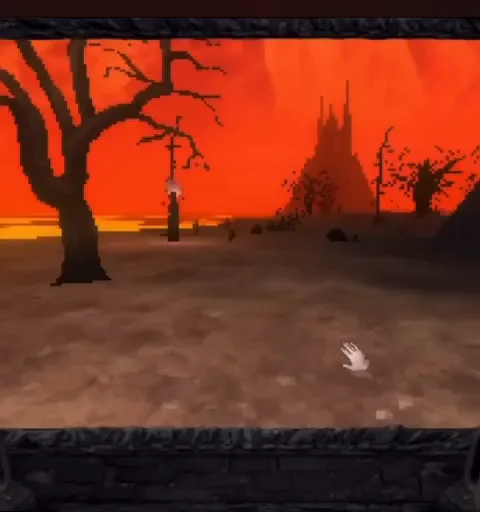Scotland (Scots: Scotland; Scottish Gaelic: Alba) is a country that is part of the United Kingdom. It contains nearly one-third of the United Kingdom's land area, consisting of the northern part of the island of Great Britain and more than 790 adjacent islands, principally in the archipelagos of the Hebrides and the Northern Isles. To the south-east, Scotland has its only land border, which is 96 miles (154 km) long and shared with England; the country is surrounded by the Atlantic Ocean to the north and west, the North Sea to the north-east and east, and the Irish Sea to the south. The population in 2022 was 5,439,842 and accounts for 8% of the population of the UK.[9] Edinburgh is the capital and Glasgow is the largest of the cities of Scotland.
The Kingdom of Scotland emerged as an independent sovereign state in the 9th century. In 1603, James VI inherited the Kingdom of England and the Kingdom of Ireland, forming a personal union of the three kingdoms. On 1 May 1707 Scotland and England combined to create the new Kingdom of Great Britain,[10][11] with the Parliament of Scotland subsumed into the Parliament of Great Britain. In 1999 a Scottish Parliament was re-established, and has devolved authority over many areas of domestic policy.[12] The country has a distinct legal system, educational system, and religious history from the rest of the UK, which have all contributed to the continuation of Scottish culture and national identity.[13] Scottish English and Scots are the most widely spoken languages in the country, existing on a dialect continuum with each other.[14] Scottish Gaelic speakers can be found all over Scotland, however the language is largely spoken natively by communities within the Hebrides.[15] The number of Gaelic speakers numbers less than 2% of the total population, though state-sponsored revitalisation attempts have led to a growing community of second language speakers.[16]
The mainland of Scotland is broadly divided into three regions: the Highlands, a mountainous region in the north and north-west; the Lowlands, a flatter plain across the centre of the country; and the Southern Uplands, a hilly region along the southern border. The Highlands are the most mountainous region of the British Isles and contain its highest peak, Ben Nevis, at 4,413 feet (1,345 m).[9] The region also contains many lakes, called lochs; the term is also applied to the many saltwater inlets along the country's deeply indented western coastline. The geography of the many islands is varied. Some, such as Mull and Skye, are noted for their mountainous terrain, while the likes of Tiree and Coll are much flatter.
Etymology
Main article: Etymology of Scotland
Scotland comes from Scoti, the Latin name for the Gaels.[17] Philip Freeman has speculated on the likelihood of a group of raiders adopting a name from an Indo-European root, *skot, citing the parallel in Greek skotos (σκότος), meaning "darkness, gloom".[18] The Late Latin word Scotia ("land of the Gaels") was initially used to refer to Ireland,[19] and likewise in early Old English Scotland was used for Ireland.[20] By the 11th century at the latest, Scotia was being used to refer to (Gaelic-speaking) Scotland north of the River Forth, alongside Albania or Albany, both derived from the Gaelic Alba.[21] The use of the words Scots and Scotland to encompass all of what is now Scotland became common in the Late Middle Ages.[10]
History
Main article: History of Scotland
For a chronological guide, see Timeline of Scottish history.
Prehistory
Prehistoric Scotland, before the arrival of the Roman Empire, was culturally divergent.[22]
Repeated glaciations, which covered the entire land mass of modern Scotland, destroyed any traces of human habitation that may have existed before the Mesolithic period. It is believed the first post-glacial groups of hunter-gatherers arrived in Scotland around 12,800 years ago, as the ice sheet retreated after the last glaciation.[23] At the time, Scotland was covered in forests, had more bog-land, and the main form of transport was by water.[24] These settlers began building the first known permanent houses on Scottish soil around 9,500 years ago, and the first villages around 6,000 years ago. The well-preserved village of Skara Brae on the mainland of Orkney dates from this period. Neolithic habitation, burial, and ritual sites are particularly common and well preserved in the Northern Isles and Western Isles, where a lack of trees led to most structures being built of local stone.[25] Evidence of sophisticated pre-Christian belief systems is demonstrated by sites such as the Callanish Stones on Lewis and the Maes Howe on Orkney, which were built in the third millennium BC.[26]: 38
Early history
The first written reference to Scotland was in 320 BC by Greek sailor Pytheas, who called the northern tip of Britain "Orcas", the source of the name of the Orkney islands.[24]: 10
Most of modern Scotland was not incorporated into the Roman Empire, and Roman control over parts of the area fluctuated over a rather short period. The first Roman incursion into Scotland was in 79 AD, when Agricola invaded Scotland; he defeated a Caledonian army at the Battle of Mons Graupius in 83 AD.[24]: 12 After the Roman victory, Roman forts were briefly set along the Gask Ridge close to the Highland line, but by three years after the battle, the Roman armies had withdrawn to the Southern Uplands.[27] Remains of Roman forts established in the 1st century have been found as far north as the Moray Firth.[28] By the reign of the Roman emperor Trajan (r. 98–117), Roman control had lapsed to Britain south of a line between the River Tyne and the Solway Firth.[29] Along this line, Trajan's successor Hadrian (r. 117–138) erected Hadrian's Wall in northern England[24]: 12 and the Limes Britannicus became the northern border of the Roman Empire.[30][31] The Roman influence on the southern part of the country was considerable, and they introduced Christianity to Scotland.[24]: 13–14 [26]: 38
The Antonine Wall was built from 142 at the order of Hadrian's successor Antoninus Pius (r. 138–161), defending the Roman part of Scotland from the unadministered part of the island, north of a line between the Firth of Clyde and the Firth of Forth.[32] The Roman invasion of Caledonia 208–210 was undertaken by emperors of the imperial Severan dynasty in response to the breaking of a treaty by the Caledonians in 197,[28] but permanent conquest of the whole of Great Britain was forestalled by Roman forces becoming bogged down in punishing guerrilla warfare and the death of the senior emperor Septimius Severus (r. 193–211) at Eboracum (York) after he was taken ill while on campaign. Although forts erected by the Roman army in the Severan campaign were placed near those established by Agricola and were clustered at the mouths of the glens in the Highlands, the Caledonians were again in revolt in 210–211 and these were overrun.[28]
To the Roman historians Tacitus and Cassius Dio, the Scottish Highlands and the area north of the River Forth was called Caledonia.[28] According to Cassius Dio, the inhabitants of Caledonia were the Caledonians and the Maeatae.[28] Other ancient authors used the adjective "Caledonian" to mean anywhere in northern or inland Britain, often mentioning the region's people and animals, its cold climate, its pearls, and a noteworthy region of wooded hills (Latin: saltus) which the 2nd century AD Roman philosopher Ptolemy, in his Geography, described as being south-west of the Beauly Firth.[28] The name Caledonia is echoed in the place names of Dunkeld, Rohallion, and Schiehallion.[28]
The Great Conspiracy constituted a seemingly coordinated invasion against Roman rule in Britain in the later 4th century, which included the participation of the Gaelic Scoti and the Caledonians, who were then known as Picts by the Romans. This was defeated by the comes Theodosius; but Roman military government was withdrawn from the island altogether by the early 5th century, resulting in the Anglo-Saxon settlement of Britain and the immigration of the Saxons to southeastern Scotland and the rest of eastern Great Britain.[29]
Kingdom of Scotland
Beginning in the sixth century, the area that is now Scotland was divided into three areas: Pictland, a patchwork of small lordships in central Scotland;[24]: 25–26 the Anglo-Saxon Kingdom of Northumbria, which had conquered southeastern Scotland;[24]: 18–20 and Dál Riata, which included territory in western Scotland and northern Ireland, and spread Gaelic language and culture into Scotland.[33] These societies were based on the family unit and had sharp divisions in wealth, although the vast majority were poor and worked full-time in subsistence agriculture. The Picts kept slaves (mostly captured in war) through the ninth century.[24]: 26–27
Gaelic influence over Pictland and Northumbria was facilitated by the large number of Gaelic-speaking clerics working as missionaries.[24]: 23–24 Operating in the sixth century on the island of Iona, Saint Columba was one of the earliest and best-known missionaries.[26]: 39 The Vikings began to raid Scotland in the eighth century. Although the raiders sought slaves and luxury items, their main motivation was to acquire land. The oldest Norse settlements were in northwest Scotland, but they eventually conquered many areas along the coast. Old Norse entirely displaced Pictish in the Northern Isles.[34]
In the ninth century, the Norse threat allowed a Gael named Kenneth I (Cináed mac Ailpín) to seize power over Pictland, establishing a royal dynasty to which the modern monarchs trace their lineage, and marking the beginning of the end of Pictish culture.[24]: 31–32 [35] The kingdom of Cináed and his descendants, called Alba, was Gaelic in character but existed on the same area as Pictland. By the end of the tenth century, the Pictish language went extinct as its speakers shifted to Gaelic.[24]: 32–33 From a base in eastern Scotland north of the River Forth and south of the River Spey, the kingdom expanded first southwards, into the former Northumbrian lands, and northwards into Moray.[24]: 34–35 Around the turn of the millennium, there was a centralization in agricultural lands and the first towns began to be established.[24]: 36–37
In the twelfth and thirteenth centuries, much of Scotland was under the control of a single ruler. Initially, Gaelic culture predominated, but immigrants from France, England and Flanders steadily created a more diverse society, with the Gaelic language starting to be replaced by Scots; and a modern nation-state emerged from this. At the end of this period, war against England started the growth of a Scottish national consciousness.[36][37]: ch 1 David I (1124–1153) and his successors centralised royal power[36]: 41–42 and united mainland Scotland, capturing regions such as Moray, Galloway, and Caithness, although he could not extend his power over the Hebrides, which had been ruled by various Scottish clans following the death of Somerled in 1164.[36]: 48–49 In 1266, Scotland fought the short but consequential Scottish-Norwegian War which saw the reclamation of the Hebrides after the strong defeat of King Haakon IV and his forces at the Battle of Largs.[38] Up until that point, the Hebrides had been under Norwegian Viking control for roughly 400 years and had developed a distinctive Norse–Gaelic culture that saw many Old Norse loanwords enter the Scottish Gaelic spoken by islanders, and through successive generations the Norse would become almost completely assimilated into Gaelic culture and the Scottish clan system. After the conflict, Scotland had to affirm Norwegian sovereignty of the Northern Isles, but they were later integrated into Scotland in the 15th century. Scandinavian culture in the form of the Norn language survived for a lot longer than in the Hebrides, and would strongly influence the local Scots dialect on Shetland and Orkney.[39] Later, a system of feudalism was consolidated, with both Anglo-Norman incomers and native Gaelic chieftains being granted land in exchange for serving the king.[36]: 53–54 The relationship with England was complex during this period: Scottish kings tried several times, sometimes with success, to exploit English political turmoil, followed by the longest period of peace between Scotland and England in the mediaeval period: from 1217–1296.[36]: 45-46
Wars of Scottish Independence
The death of Alexander III in March 1286 broke the succession line of Scotland's kings. Edward I of England arbitrated between various claimants for the Scottish crown. In return for surrendering Scotland's nominal independence, John Balliol was pronounced king in 1292.[36]: 47 [40] In 1294, Balliol and other Scottish lords refused Edward's demands to serve in his army against the French. Scotland and France sealed a treaty on 23 October 1295, known as the Auld Alliance. War ensued, and John was deposed by Edward who took personal control of Scotland. Andrew Moray and William Wallace initially emerged as the principal leaders of the resistance to English rule in the Wars of Scottish Independence,[41] until Robert the Bruce was crowned king of Scotland in 1306.[42] Victory at the Battle of Bannockburn in 1314 proved the Scots had regained control of their kingdom. In 1320 the world's first documented declaration of independence, the Declaration of Arbroath, won the support of Pope John XXII, leading to the legal recognition of Scottish sovereignty by the English Crown.[43]: 70, 72
A civil war between the Bruce dynasty and their long-term rivals of the House of Comyn and House of Balliol lasted until the middle of the 14th century. Although the Bruce faction was successful, David II's lack of an heir allowed his half-nephew Robert II, the Lord High Steward of Scotland, to come to the throne and establish the House of Stewart.[43]: 77 The Stewarts ruled Scotland for the remainder of the Middle Ages. The country they ruled experienced greater prosperity from the end of the 14th century through the Scottish Renaissance to the Reformation,[44]: 93 despite the effects of the Black Death in 1349[43]: 76 and increasing division between Highlands and Lowlands.[43]: 78 Multiple truces reduced warfare on the southern border.[43]: 76, 83
Union of the Crowns
The Treaty of Perpetual Peace was signed in 1502 by James IV of Scotland and Henry VII of England. James married Henry's daughter, Margaret Tudor.[45] James invaded England in support of France under the terms of the Auld Alliance and became the last monarch in Great Britain to die in battle, at Flodden in 1513.[46] The war with England during the minority years of Mary, Queen of Scots between 1543 and 1551 is known as the Rough Wooing.[47] In 1560, the Treaty of Edinburgh brought an end to the Siege of Leith and recognized the Protestant Elizabeth I as Queen of England.[44]: 112 The Parliament of Scotland met and immediately adopted the Scots Confession, which signalled the Scottish Reformation's sharp break from papal authority and Roman Catholic teaching.[26]: 44 The Catholic Mary, Queen of Scots, was forced to abdicate in 1567.[48]
In 1603, James VI, King of Scots inherited the thrones of the Kingdom of England and the Kingdom of Ireland in the Union of the Crowns, and moved to London.[49] This was a personal union as despite having the same monarch the kingdoms retained their separate parliaments, laws and other institutions. The first Union Jack was designed at James's behest, to be flown in addition to the St Andrew's Cross on Scots vessels at sea. James VI and I intended to create a single kingdom of Great Britain, but was thwarted in his attempt to do so by the Parliament of England, which supported the wrecking proposal that a full legal union be sought instead, a proposal to which the Scots Parliament would not assent, causing the king to withdraw the plan.[50]
Except for a short period under the Protectorate, Scotland remained a separate state in the 17th century, but there was considerable conflict between the crown and the Covenanters over the form of church government.[51]: 124 The military was strengthened, allowing the imposition of royal authority on the western Highland clans. The 1609 Statutes of Iona compelled the cultural integration of Hebridean clan leaders.[52]: 37–40 In 1641 and again in 1643, the Parliament of Scotland unsuccessfully sought a union with England which was "federative" and not "incorporating", in which Scotland would retain a separate parliament.[53] The issue of union split the parliament in 1648.[53]
After the execution of the Scottish king at Whitehall in 1649, amid the Wars of the Three Kingdoms and its events in Scotland, Oliver Cromwell, the victorious Lord Protector, imposed the British Isles' first written constitution – the Instrument of Government – on Scotland in 1652 as part of the republican Commonwealth of England, Scotland, and Ireland.[53] The Protectorate Parliament was the first Westminster parliament to include representatives nominally from Scotland. The monarchy of the House of Stuart was resumed with the Restoration in Scotland in 1660. The Parliament of Scotland sought a commercial union with England in 1664; the proposal was rejected in 1668.[53] In 1670 the Parliament of England rejected a proposed political union with Scotland.[53] English proposals along the same lines were abandoned in 1674 and in 1685.[53] The Scots Parliament rejected proposals for a political union with England in 1689.[53] Jacobitism, the political support for the exiled Catholic Stuart dynasty, remained a threat to the security of the British state under the Protestant House of Orange and the succeeding House of Hanover until the defeat of the Jacobite rising of 1745.[53] In 1698, the Company of Scotland attempted a project to secure a trading colony on the Isthmus of Panama. Almost every Scottish landowner who had money to spare is said to have invested in the Darien scheme.[54][55]
Treaty of Union
After another proposal from the English House of Lords was rejected in 1695, and a further Lords motion was voted down in the House of Commons in 1700, the Parliament of Scotland again rejected union in 1702.[53] The failure of the Darien Scheme bankrupted the landowners who had invested, though not the burghs. Nevertheless, the nobles' bankruptcy, along with the threat of an English invasion, played a leading role in convincing the Scots elite to back a union with England.[54][55] On 22 July 1706, the Treaty of Union was agreed between representatives of the Scots Parliament and the Parliament of England. The following year, twin Acts of Union were passed by both parliaments to create the united Kingdom of Great Britain with effect from 1 May 1707[56] with popular opposition and anti-union riots in Edinburgh, Glasgow, and elsewhere.[57][58] The union also created the Parliament of Great Britain, which succeeded both the Parliament of Scotland and the Parliament of England, which rejected proposals from the Parliament of Ireland that the third kingdom be incorporated in the union.[53]
With trade tariffs with England abolished, trade blossomed, especially with Colonial America. The clippers belonging to the Glasgow Tobacco Lords were the fastest ships on the route to Virginia. Until the American War of Independence in 1776, Glasgow was the world's premier tobacco port, dominating world trade.[59] The disparity between the wealth of the merchant classes of the Scottish Lowlands and the ancient clans of the Scottish Highlands grew, amplifying centuries of division.
The deposed Jacobite Stuart claimants had remained popular in the Highlands and north-east, particularly among non-Presbyterians, including Roman Catholics and Episcopalian Protestants. Two major Jacobite risings launched in 1715 and 1745 failed to remove the House of Hanover from the British throne. The threat of the Jacobite movement to the United Kingdom and its monarchs effectively ended at the Battle of Culloden, Great Britain's last pitched battle.
In the Highlands, clan chiefs gradually started to think of themselves more as commercial landlords than leaders of their people. These social and economic changes included the first phase of the Highland Clearances and, ultimately, the demise of clanship. : 32–53, passim
Industrial age and the Scottish Enlightenment
The Scottish Enlightenment and the Industrial Revolution turned Scotland into an intellectual, commercial and industrial powerhouse — so much so Voltaire said "We look to Scotland for all our ideas of civilisation." With the demise of Jacobitism and the advent of the Union, thousands of Scots, mainly Lowlanders, took up numerous positions of power in politics, civil service, the army and navy, trade, economics, colonial enterprises and other areas across the nascent British Empire. Historian Neil Davidson notes "after 1746 there was an entirely new level of participation by Scots in political life, particularly outside Scotland." Davidson also states "far from being 'peripheral' to the British economy, Scotland – or more precisely, the Lowlands – lay at its core."
The Scottish Reform Act 1832 increased the number of Scottish MPs and widened the franchise to include more of the middle classes. From the mid-century, there were increasing calls for Home Rule for Scotland and the post of Secretary of State for Scotland was revived. Towards the end of the century Prime Ministers of Scottish descent included William Gladstone,[66] and the Earl of Rosebery. In the late 19th century the growing importance of the working classes was marked by Keir Hardie's success in the Mid Lanarkshire by-election, 1888, leading to the foundation of the Scottish Labour Party, which was absorbed into the Independent Labour Party in 1895, with Hardie as its first leader. Glasgow became one of the largest cities in the world and known as "the Second City of the Empire" after London. After 1860, the Clydeside shipyards specialised in steamships made of iron (after 1870, made of steel), which rapidly replaced the wooden sailing vessels of both the merchant fleets and the battle fleets of the world. It became the world's pre-eminent shipbuilding centre. The industrial developments, while they brought work and wealth, were so rapid that housing, town planning, and provision for public health did not keep pace with them, and for a time living conditions in some of the towns and cities were notoriously bad, with overcrowding, high infant mortality, and growing rates of tuberculosis.
While the Scottish Enlightenment is traditionally considered to have concluded toward the end of the 18th century, disproportionately large Scottish contributions to British science and letters continued for another 50 years or more, thanks to such figures as the physicists James Clerk Maxwell and Lord Kelvin, and the engineers and inventors James Watt and William Murdoch, whose work was critical to the technological developments of the Industrial Revolution throughout Britain.[73] In literature, the most successful figure of the mid-19th century was Walter Scott. His first prose work, Waverley in 1814, is often called the first historical novel. It launched a highly successful career that probably more than any other helped define and popularise Scottish cultural identity. In the late 19th century, a number of Scottish-born authors achieved international reputations, such as Robert Louis Stevenson, Arthur Conan Doyle, J. M. Barrie and George MacDonald.[76] Scotland also played a major part in the development of art and architecture. The Glasgow School, which developed in the late 19th century, and flourished in the early 20th century, produced a distinctive blend of influences including the Celtic Revival the Arts and Crafts movement, and Japonism, which found favour throughout the modern art world of continental Europe and helped define the Art Nouveau style. Proponents included architect and artist Charles Rennie Mackintosh.
World wars and Scotland Act 1998
Scotland played a major role in the British effort in the First World War. It especially provided manpower, ships, machinery, fish and money. With a population of 4.8 million in 1911, Scotland sent over half a million men to the war, of whom over a quarter died in combat or from disease, and 150,000 were seriously wounded.[79] Field Marshal Sir Douglas Haig was Britain's commander on the Western Front. The war saw the emergence of a radical movement called "Red Clydeside" led by militant trades unionists. Formerly a Liberal stronghold, the industrial districts switched to Labour by 1922, with a base among the Irish Catholic working-class districts. Women were especially active in building neighbourhood solidarity on housing issues. The "Reds" operated within the Labour Party with little influence in Parliament and the mood changed to passive despair by the late 1920s.
During the Second World War, Scotland was targeted by Nazi Germany largely due to its factories, shipyards, and coal mines. Cities such as Glasgow and Edinburgh were targeted by German bombers, as were smaller towns mostly located in the central belt of the country. Perhaps the most significant air raid in Scotland was the Clydebank Blitz of March 1941, which intended to destroy naval shipbuilding in the area. 528 people were killed and 4,000 homes totally destroyed. Perhaps Scotland's most unusual wartime episode occurred in 1941 when Rudolf Hess flew to Renfrewshire, possibly intending to broker a peace deal through the Duke of Hamilton.[83] Before his departure from Germany, Hess had given his adjutant, Karlheinz Pintsch, a letter addressed to Adolf Hitler that detailed his intentions to open peace negotiations with the British. Pintsch delivered the letter to Hitler at the Berghof around noon on 11 May. Albert Speer later said Hitler described Hess's departure as one of the worst personal blows of his life, as he considered it a personal betrayal. Hitler worried that his allies, Italy and Japan, would perceive Hess's act as an attempt by Hitler to secretly open peace negotiations with the British.
After 1945, Scotland's economic situation worsened due to overseas competition, inefficient industry, and industrial disputes. Only in recent decades has the country enjoyed something of a cultural and economic renaissance. Economic factors contributing to this recovery included a resurgent financial services industry, electronics manufacturing, (see Silicon Glen), and the North Sea oil and gas industry. The introduction in 1989 by Margaret Thatcher's government of the Community Charge (widely known as the Poll Tax) one year before the rest of Great Britain, contributed to a growing movement for Scottish control over domestic affairs.
Following a referendum on devolution proposals in 1997, the Scotland Act 1998[91] was passed by the British Parliament, which established a devolved Scottish Parliament and Scottish Government with responsibility for most laws specific to Scotland.[92] The Scottish Parliament was reconvened in Edinburgh on 4 July 1999.[93] The first to hold the office of first minister of Scotland was Donald Dewar, who served until his sudden death in 2000.
21st century
The Scottish Parliament Building at Holyrood opened in October 2004 after lengthy construction delays and running over budget. The Scottish Parliament's form of proportional representation (the additional member system) resulted in no one party having an overall majority for the first three Scottish parliament elections.
The pro-independence Scottish National Party led by Alex Salmond achieved an overall majority in the 2011 election, winning 69 of the 129 seats available. The success of the SNP in achieving a majority in the Scottish Parliament paved the way for the September 2014 referendum on Scottish independence. The majority voted against the proposition, with 55% voting no to independence. More powers, particularly concerning taxation, were devolved to the Scottish Parliament after the referendum, following cross-party talks in the Smith Commission.
Since the 2014 referendum, events such as the UK leaving the European Union, despite a majority of voters in Scotland voting to remain a member, have led to calls for a second independence referendum. In 2022, the Lord Advocate Dorothy Bain argued the case for the Scottish Government to hold another referendum on the issue, with the Supreme Court later ruling against the argument. Following the Supreme Court decision, the Scottish Government stated that it wished to make amendments to the Scotland Act 1998 that would allow a referendum to be held in 2023.
Geography and natural history
The mainland of Scotland comprises the northern third of the land mass of the island of Great Britain, which lies off the northwest coast of Continental Europe. The total area is 30,977 square miles (80,231 km2) with a land area of 30,078 square miles (77,901 km2), comparable to the size of the Czech Republic. Scotland's only land border is with England, and runs for 96 miles (154 km) between the basin of the River Tweed on the east coast and the Solway Firth in the west. The Atlantic Ocean borders the west coast and the North Sea is to the east. The island of Ireland lies only 13 miles (21 km) from the south-western peninsula of Kintyre; Norway is 190 miles (305 km) to the northeast and the Faroe Islands, 168 miles (270 km) to the north.
The territorial extent of Scotland is generally that established by the 1237 Treaty of York between Scotland and the Kingdom of England and the 1266 Treaty of Perth between Scotland and Norway. Important exceptions include the Isle of Man, which having been lost to England in the 14th century is now a crown dependency outside of the United Kingdom; the island groups Orkney and Shetland, which were acquired from Norway in 1472;[102] and Berwick-upon-Tweed, lost to England in 1482
The geographical centre of Scotland lies a few miles from the village of Newtonmore in Badenoch.[103] Rising to 4,413 feet (1,345 m) above sea level, Scotland's highest point is the summit of Ben Nevis, in Lochaber, while Scotland's longest river, the River Tay, flows for a distance of 117 miles (188 km).
Geology and geomorphology
The whole of Scotland was covered by ice sheets during the Pleistocene ice ages and the landscape is much affected by glaciation. From a geological perspective, the country has three main sub-divisions: the Highlands and Islands, the Central Lowlands, and the Southern Uplands.
The Highlands and Islands lie to the north and west of the Highland Boundary Fault, which runs from Arran to Stonehaven. This part of Scotland largely comprises ancient rocks from the Cambrian and Precambrian, which were uplifted during the later Caledonian orogeny. It is interspersed with igneous intrusions of a more recent age, remnants of which formed mountain massifs such as the Cairngorms and Skye Cuillins.[104] In north-eastern mainland Scotland weathering of rock that occurred before the Last Ice Age has shaped much of the landscape.
A significant exception to the above are the fossil-bearing beds of Old Red Sandstones found principally along the Moray Firth coast. The Highlands are generally mountainous and the highest elevations in the British Isles are found here. Scotland has over 790 islands divided into four main groups: Shetland, Orkney, and the Inner Hebrides and Outer Hebrides. There are numerous bodies of freshwater including Loch Lomond and Loch Ness. Some parts of the coastline consist of machair, a low-lying dune pasture land.
The Central Lowlands is a rift valley mainly comprising Paleozoic formations. Many of these sediments have economic significance for it is here that the coal and iron-bearing rocks that fuelled Scotland's industrial revolution are found. This area has also experienced intense volcanism, Arthur's Seat in Edinburgh being the remnant of a once much larger volcano. This area is relatively low-lying, although even here hills such as the Ochils and Campsie Fells are rarely far from view.
The Southern Uplands is a range of hills almost 125 miles (200 km) long, interspersed with broad valleys. They lie south of a second fault line (the Southern Uplands fault) that runs from Girvan to Dunbar. The geological foundations largely comprise Silurian deposits laid down some 400 to 500 million years ago. The high point of the Southern Uplands is Merrick with an elevation of 843 m (2,766 ft). The Southern Uplands is home to Scotland's highest village, Wanlockhead (430 m or 1,411 ft above sea level).
Climate
The climate of most of Scotland is temperate and oceanic, and tends to be very changeable. As it is warmed by the Gulf Stream from the Atlantic, it has much milder winters (but cooler, wetter summers) than areas on similar latitudes, such as Labrador, southern Scandinavia, the Moscow region in Russia, and the Kamchatka Peninsula on the opposite side of Eurasia. Temperatures are generally lower than in the rest of the UK, with the temperature of −27.2 °C (−17.0 °F) recorded at Braemar in the Grampian Mountains, on 11 February 1895, the coldest ever recorded anywhere in the UK. Winter maxima average 6 °C (43 °F) in the Lowlands, with summer maxima averaging 18 °C (64 °F). The highest temperature recorded was 35.1 °C (95.2 °F) at Floors Castle, Scottish Borders on 19 July 2022.
The west of Scotland is usually warmer than the east, owing to the influence of Atlantic ocean currents and the colder surface temperatures of the North Sea. Tiree, in the Inner Hebrides, is one of the sunniest places in the country: it had more than 300 hours of sunshine in May 1975. Rainfall varies widely across Scotland. The western highlands of Scotland are the wettest, with annual rainfall in a few places exceeding 3,000 mm (120 in). In comparison, much of lowland Scotland receives less than 800 mm (31 in) annually. Heavy snowfall is not common in the lowlands, but becomes more common with altitude. Braemar has an average of 59 snow days per year, while many coastal areas average fewer than 10 days of lying snow per year.
Scotland's wildlife is typical of the north-west of Europe, although several of the larger mammals such as the lynx, brown bear, wolf, elk and walrus were hunted to extinction in historic times. There are important populations of seals and internationally significant nesting grounds for a variety of seabirds such as gannets.[118] The golden eagle is something of a national icon.
On the high mountain tops, species including ptarmigan, mountain hare and stoat can be seen in their white colour phase during winter months. Remnants of the native Scots pine forest exist[121] and within these areas the Scottish crossbill, the UK's only endemic bird species and vertebrate, can be found alongside capercaillie, Scottish wildcat, red squirrel and pine marten.[122][123][124] Various animals have been re-introduced, including the white-tailed eagle in 1975, the red kite in the 1980s,[125][126] and there have been experimental projects involving the beaver and wild boar. Today, much of the remaining native Caledonian Forest lies within the Cairngorms National Park and remnants of the forest remain at 84 locations across Scotland. On the west coast, remnants of ancient Celtic Rainforest remain, particularly on the Taynish peninsula in Argyll, these forests are particularly rare due to high rates of deforestation throughout Scottish history.
The flora of the country is varied incorporating both deciduous and coniferous woodland as well as moorland and tundra species. Large-scale commercial tree planting and management of upland moorland habitat for the grazing of sheep and field sport activities like deer stalking and driven grouse shooting impacts the distribution of indigenous plants and animals.[129] The UK's tallest tree is a grand fir planted beside Loch Fyne, Argyll in the 1870s, and the Fortingall Yew may be 5,000 years old and is probably the oldest living thing in Europe.Although the number of native vascular plants is low by world standards, Scotland's substantial bryophyte flora is of global importance.
During the 1820s, many Scots migrated from Scotland to countries such as Australia, the United States and Canada, principally from the Highlands which remained poor in comparison to elsewhere in Scotland. The Highlands was the only part of mainland Britain with a recurrent famine. A small range of products were exported from the region, which had negligible industrial production and a continued population growth that tested the subsistence agriculture. These problems, and the desire to improve agriculture and profits were the driving forces of the ongoing Highland Clearances, in which many of the population of the Highlands suffered eviction as lands were enclosed, principally so that they could be used for sheep farming. The first phase of the clearances followed patterns of agricultural change throughout Britain. The second phase was driven by overpopulation, the Highland Potato Famine and the collapse of industries that had relied on the wartime economy of the Napoleonic Wars.
The population of Scotland grew steadily in the 19th century, from 1,608,000 in the census of 1801 to 2,889,000 in 1851 and 4,472,000 in 1901. Even with the development of industry, there were not enough good jobs. As a result, during the period 1841–1931, about 2 million Scots migrated to North America and Australia, and another 750,000 Scots relocated to England. Caused by the advent of refrigeration and imports of lamb, mutton and wool from overseas, the 1870s brought with them a collapse of sheep prices and an abrupt halt in the previous sheep farming boom.
In August 2012, the Scottish population reached an all-time high of 5.25 million people. The reasons given were that, in Scotland, births were outnumbering the number of deaths, and immigrants were moving to Scotland from overseas. In 2011, 43,700 people moved from Wales, Northern Ireland or England to live in Scotland. The most recent census in Scotland was conducted by the Scottish Government and the National Records of Scotland in March 2022. The population of Scotland at the 2022 Census was 5,436,600, the highest ever, beating the previous record of 5,295,400 at the 2011 Census. It was 5,062,011 at the 2001 Census. An ONS estimate for mid-2021 was 5,480,000.In the 2011 Census, 62% of Scotland's population stated their national identity as 'Scottish only', 18% as 'Scottish and British', 8% as 'British only', and 4% chose 'other identity only'.
Throughout its history, Scotland has long had a tradition of migration from Scotland and immigration into Scotland. In 2021, the Scottish Government released figures showing that an estimated 41,000 people had immigrated from other international countries into Scotland, while an average of 22,100 people had migrated from Scotland. Scottish Government data from 2002 shows that by 2021, there had been a sharp increase in immigration to Scotland, with 2002 estimates standing at 27,800 immigrants. While immigration had increased from 2002, migration from Scotland had dropped, with 2002 estimates standing at 26,200 people migrating from Scotland.
Urbanisation
See also: Cities of Scotland
Although Edinburgh is the capital of Scotland, the largest city is Glasgow, which has just over 584,000 inhabitants. The Greater Glasgow conurbation, with a population of almost 1.2 million, is home to nearly a quarter of Scotland's population.[148] The Central Belt is where most of the main towns and cities of Scotland are located, including Glasgow, Edinburgh, Dundee, and Perth. Scotland's only major city outside the Central Belt is Aberdeen. The Scottish Lowlands host 80% of the total population, where the Central Belt accounts for 3.5 million people.
In general, only the more accessible and larger islands remain inhabited. Currently, fewer than 90 remain inhabited. The Southern Uplands is essentially rural and dominated by agriculture and forestry. Because of housing problems in Glasgow and Edinburgh, five new towns were designated between 1947 and 1966. They are East Kilbride, Glenrothes, Cumbernauld, Livingston, and Irvine.
Scotland has three indigenous languages: English, Scots, and Scottish Gaelic. Scottish Standard English, a variety of English as spoken in Scotland, is at one end of a bipolar linguistic continuum, with broad Scots at the other. Scottish Standard English may have been influenced to varying degrees by Scots. Highland English is spoken in that region, while Gaelic is mostly spoken in the Western Isles, where it continues to be used by a large proportion of residents.
Overall, the use of Scotland's indigenous languages other than English has declined since the 19th century. The 2011 census indicated that 63% of the population had "no skills in Scots". The use of Gaelic is confined to 1% of the population. The number of Gaelic speakers in Scotland dropped from 250,000 in 1881 to 60,000 in 2008. Across the whole of Scotland, the 2011 census showed that 25,000 people (0.49% of the population) used Gaelic at home. The most common language spoken at home in Scotland after English and Scots is Polish, with about 1.1% of the population, or 54,000 people.
Immigration since World War II has given Glasgow, Edinburgh, and Dundee small South Asian communities. In 2011, there were an estimated 49,000 ethnically Pakistani people living in Scotland, making them the largest non-White ethnic group. The 2004 enlargement of the European Union spurred an increase in migration from Central and Eastern Europe to Scotland, and the 2011 census indicated that 61,000 Poles lived there.
There are many more people with Scottish ancestry living abroad than the total population of Scotland. In the 2000 Census, 9.2 million Americans self-reported some degree of Scottish descent. Ulster's Protestant population is mainly of lowland Scottish descent, and it is estimated that there are more than 27 million descendants of the Scots-Irish migration now living in the US. In Canada, the Scottish-Canadian community accounts for 4.7 million people. About 20% of the original European settler population of New Zealand came from Scotland.



















3 comments